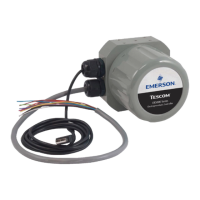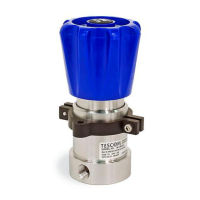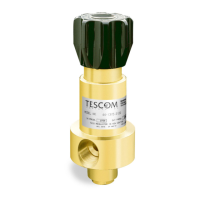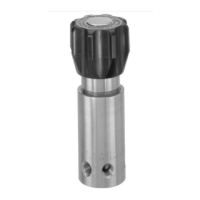ER5000 —
41
Typical Application
A Note Concerning Non-Venting Regulators in Closed
Loop Applications
Non-venting regulators, which do not feature a regulator vent to
exhaust excess system pressure, pose a particular challenge in
closed loop applications when the downstream ow is blocked.
When downstream ow stops suddenly, for example when a
downstream valve is closed, feedback rises rapidly. The regulator
responds by closing its main valve. However, due to Lock-up in the
regulator, a small amount of excess pressure escapes through the
main valve before it achieves a completely tight seal.
In venting regulators, this excess downstream pressure is
exhausted by the regulator vent, allowing the system to return
to stable state. In non-venting regulators, this excess pressure is
trapped in the downstream pipe.
The PID controller senses the rise in feedback and activates to
lower system pressure. But the regulator cannot respond, since it
cannot vent. Because the excess system pressure is trapped, the
error will not change. The controller could continue to respond
until the pilot pressure is completely vented through the exhaust
valve. This can create two different undesirable conditions:
• If the regulator is a metal diaphragm sensed regulator, the
differential between the high downstream pressure beneath
the diaphragm and the low (or even zero) pilot pressure above
the diaphragm can critically stress the diaphragm.
• Regardless of regulator type, if the downstream ow suddenly
restarts, the PID controller’s response will be delayed,
because it will need to completely rell the regulator’s dome
or air actuator cavity.
When the Diaphragm Protection feature of the ER5000 is
activated, the controller responds to error only up to a set
percentage of the original pilot pressure, then stops. This allows
the controller and regulator to be reset quickly once system ow
has been restored and minimizes pressure differentials that can
effect regulator components.
The Regulator Diaphragm Protection feature is strongly
recommended for applications using metal diaphragm sensed
regulators. It provides a control benet for applications using non-
venting regulators. It is not required for applications using venting
regulators or piston sensed regulators.
Refer to The Diaphragm Protection Panel to learn more about
this feature.

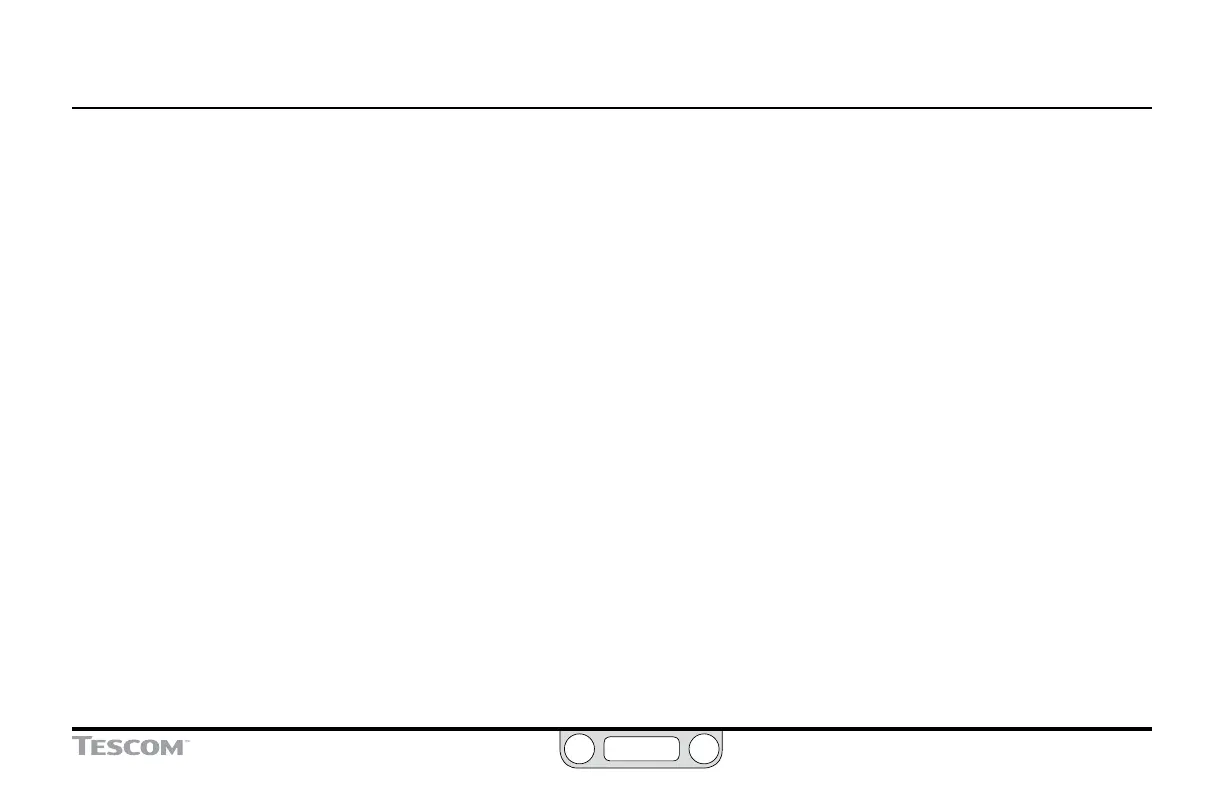